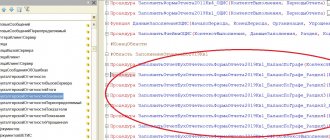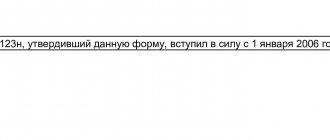The need to maintain off-balance sheet accounts
Data on property, which is kept on the balance sheet, makes it possible to correctly evaluate all the assets of the enterprise. Without this information, no audit firm will be able to provide a positive opinion. Complete accounting of property will come to the aid not only of the enterprise, but also of the tax authorities inspecting its activities. For example, by recording data on leased fixed assets on account 001, you can always justify the costs of their repair.
If an enterprise transfers its property to other companies as collateral or for rent, then information about this reflected in off-balance sheet accounts (AB) will come in handy for drawing up a financial plan and maintaining management accounting. Off-balance sheet data is increasingly being used in the development of financial statements. Therefore, it is so important to maintain APs and periodically conduct their inventory.
Off-balance sheet accounting objects
According to clause 263 of Instruction No. 148n as amended by Order No. 152n of the Ministry of Finance of Russia dated December 30, 2009, off-balance sheet accounts take into account assets held by the institution, but not assigned to it with the right of operational management:
- leased fixed assets;
- non-financial assets received with the right of free use, received for storage and (or) processing, as well as through centralized procurement, etc.;
- material assets, the accounting of which, according to Instruction No. 148n, is provided outside of balance sheet accounts: fixed assets worth up to 3,000 rubles. inclusive, put into operation; periodicals for use as part of the library collection, regardless of their cost; strict reporting forms; property acquired for the purpose of rewarding (donating); rolling awards, prizes, cups; material assets paid for through centralized supply (centralized supply); special equipment for carrying out research work under agreements or state (municipal) contracts with customers, experimental devices, other assets); calculations;
- obligations awaiting fulfillment;
- additional analytical data on transactions performed, necessary for disclosing information on budget execution in budget reporting.
The list of off-balance sheet accounts used in budget accounting is contained in Part III of Section 5 of Instruction No. 148n:
Information reflected in off-balance sheet accounts
An enterprise has the right to use eleven legal provisions provided for by law. Their totality is conditionally divided into the following blocks (groups):
| Groups | AP taking into account |
| 1 | property that does not belong to the company |
| 2 | obligations and security |
| 3 | other property |
Purpose of the ZS:
- recording values that the company does not own, but temporarily uses or stores;
- control over the conduct of business transactions of a certain type.
If explicit APs do not provide for any objects specific to a particular enterprise, then it is possible to supplement their composition. Another solution is to introduce subaccounts to those already in use. All such actions must be recorded in the accounting policies.
Features of inventory of assets on off-balance sheet accounts
Inventory is a form of monitoring the state of the property and liabilities of an enterprise and their actual availability. It is necessary to compare the data contained in the accounting with the actual data. There is no way to do without the results of inventory work when the time comes to compile the annual report.
The need to carry out an inventory of property recorded on the balance sheet is enshrined in the Federal Law and the Regulations on Accounting. Behind the specified documents, this method of actual control covers all obligations of the enterprise and its assets. Inventory in full concerns property that is registered but does not belong to the enterprise.
Postings reflecting the results of the inventory
At the end of the inventory work, the final acts are signed:
- Each member of the commission.
- Employees who are entrusted with financial responsibility.
The inspection may go smoothly and not reveal any discrepancies. But the discovery of excess property or a shortage of assets listed on the property owner is a completely possible phenomenon. Such facts are reflected in the corresponding accounting notes:
| Debit | Credit | Description |
| 003 | Writing off shortages of materials accepted for processing | |
| 91.2 | 76 | Losses are included in other expenses. They were obtained due to the lack of materials previously taken for processing |
When excess off-balance sheet assets are discovered, they are allowed to be taken into account in the balance sheet as other income:
| Debit | Credit | Description |
| 003 | Capitalization of surplus | |
| 10.1 | 91.1 | Excess materials taken for processing are included in the assets of the enterprise |
The inventory process of off-balance sheet accounts: step-by-step instructions
An inventory is carried out before preparing annual reports. By the beginning of such serious work, all information about the actual state of assets at the AP should be at the disposal of the accountant. It is quite acceptable:
- do not take inventory of property when it has already been checked in a similar way two to three months before the end of the year (October-December);
- an inventory of library collections should be carried out every five years, and fixed assets – once every 3 years;
- enterprises located in the Far North should take inventory of current assets when they have the least amount in their balances.
Sequence of the inventory process:
| Stages | Content | Explanation |
| First | Creation of an inventory commission | Formed by order of the head, has powers throughout the year. If there is a lot of work, you can create a working commission |
| Second | Issuing an order to conduct an inventory | Specific timing and reasons for control are indicated. Members of the commission are determined |
| Third | Fixation of asset balances with accounting data | Provided by the accountant on the start date of the inventory |
| Fourth | Direct inventory | It takes place in the presence of persons bearing financial responsibility. The actual amount of assets and how real the recorded financial liabilities are are revealed. Information is recorded in documents: acts and inventories |
| Fifth | Registration of results | The summary is made in the Statement of Results |
The procedure for conducting and recording the results of inventory of goods and materials (commodity and material assets)
Ideally, all material assets and obligations of the company in fact should correspond to accounting data. In order to get as close to the ideal as possible, there is such an accounting method as inventory.
It represents a periodic comparison of actual and accounting data on the company's assets and liabilities.
In addition to checking the availability of objects and ensuring the reliability of accounting, inventory has the following purposes:
- Analysis of the condition of the property in terms of its market value and the need for revaluation or write-off.
- Checking compliance with the operating conditions of fixed assets and storage of other types of inventory items.
- Identification of overdue debts and analysis of the reasons for their occurrence.
Inventory is carried out not only for one’s own property and obligations, but also for leased objects, as well as for valuables accepted for processing.
When is it necessary to carry out an inventory?
The conditions under which an inventory must be carried out without fail are listed in clause 27 of the Regulations on accounting and financial reporting, approved by order of the Ministry of Finance of the Russian Federation dated July 29, 1998 No. 34n:
- before drawing up annual reports (except for those objects for which an inspection has already been carried out after October 1 of the current year);
- for any types of alienation of property, as well as for its rental;
- when replacing MOL;
- when identifying facts of criminal attacks on property;
- after any force majeure situations that could lead to damage to material assets (for example, a fire);
- during reorganization or liquidation of the company.
In addition to cases established by law, inventory can be carried out in other situations, at the discretion of the organization’s management. For example, as part of an internal audit.
The regulations for conducting inventories must be reflected in the accounting policies.
Features of inventory in individual cases
In general, an inventory of all types of property and liabilities should be carried out at least once a year. However, there are exceptions to this rule related to the characteristics of individual asset groups.
Fixed assets are allowed to be checked once every three years, library collections - once every five years.
In terms of fixed assets (fixed assets), this can be explained by the fact that for this group of assets the number of units and their “variability” are, as a rule, minimal compared to other categories of property. As for libraries, the relaxation provided for by law is apparently due to the great complexity of recalculating book collections.
In addition, in the regions of the Far North, goods and materials can be checked not when one of the events listed above occurs, but during the period of their minimum balances. This is due to the peculiarities of the supply of goods and materials to remote northern regions, which is carried out mainly in the summer (the so-called Northern delivery).
Order on inventory of material assets
Like any accounting operation, inventory is accompanied by the preparation of supporting documents. First of all, so that the procedure can begin, a corresponding order is issued.
This document can be drawn up using the unified form INV-22, approved by Decree of the State Statistics Committee of the Russian Federation dated August 18, 1998 No. 88. This resolution approves not only a sample order for inventory of goods and materials, but also the forms of all other necessary documents related to the inventory, which will be discussed below (acts, inventories, etc.).
Although economic entities have the right to independently develop primary documents, in practice, most businessmen, when conducting an inventory, use forms developed by the State Statistics Committee. Therefore, we will consider them further as examples.
A sample order for inventory of material assets contains all the information necessary for its implementation:
- property being inspected;
- location of the objects being checked;
- basis for holding;
- information about the commission;
- period and completion date of the inventory.
A sample order for inventory of inventory items can be downloaded here.
Inventory procedure
The general procedure for conducting an inventory is set out in the Guidelines for the inventory of property and financial obligations, approved by Order of the Ministry of Finance of the Russian Federation dated June 13, 1995 No. 49.
The first stage of the inventory was described in the previous section. This is making a decision to conduct and issuing an appropriate order defining its parameters (see sample order for conducting a property inventory).
Then you need to record the balances of property and liabilities according to accounting data at the time of the start of the audit. Financially responsible persons (MRP) must give a receipt stating that all incoming and outgoing goods and materials at the time of the start of the inspection have been capitalized and written off, and the documents have been submitted to the accounting department.
Next, the actual inventory is carried out, that is, a comparison of the actual availability of values and obligations with accounting data. The inspection must necessarily take place in the presence of the MOL.
During the inventory, no operations should be performed with the objects being inspected.
The inventory results are documented, and all identified deviations are reflected in the accounting records. We will consider in detail the registration and recording of inventory results in the following sections.
Act, sample matching sheet and other final documents for inventory of inventory items
The format for recording inventory results depends on the asset category. This may be an inventory act or an inventory list.
An inventory is compiled during an inventory of objects whose presence can be physically verified—fixed assets and other inventory items.
If the inspected object is not located on the territory of the enterprise or does not have a physical form at all and is controlled on the basis of documents, then an act is drawn up.
This applies, for example, to settlements with counterparties, shipped goods, deferred expenses, etc.
Regardless of the type of objects, the final document will contain the following information:
- Information about the organization.
- Inventory date.
- Category of objects.
- Location (for fixed assets and inventory items).
- List of objects indicating their characteristics, quantity and cost (estimates).
- Comparison of actual and accounting data for objects.
A sample report of the results of the inventory of shipped inventory items can be downloaded here.
If, based on the results of the inventory of fixed assets or goods and materials, deviations from the accounting data are found, then an additional document is filled out - a comparison sheet of the results of the inventory of inventory items (INV-19) or fixed assets (INV-18).
These forms contain special columns showing deviations of actual indicators from accounting ones. Form INV-18, in addition, includes information about the reflection of identified deviations in accounting.
A sample comparison sheet of inventory inventory results can be downloaded here.
In aggregate, all inventory results for the year are reflected in the form INV-26 “Statement of results identified by inventory.” This form contains data on identified deviations and their reflection in accounting for asset groups.
Reflection in accounting of the results of inventory of fixed assets and other inventory items
The main purpose of inventory is to ensure the reliability of financial statements. Therefore, if deviations are detected, they should be reflected in accounting.
For fixed assets and other goods and materials, there may be three options here - surplus, shortage or mis-grading (it can be considered a combination of surplus and shortage).
The surplus is credited to other income in correspondence with the appropriate account, depending on the type of asset. Capitalization of surplus is carried out at market prices:
Dt 08, 10, 41, 43, 50 Kt 91.1.
The identified shortage is first reflected in the debit of the account. 94 “Shortages and losses from damage to valuables.”
Next, there are several options for writing it off.
If norms for natural loss are established for this category of goods and materials, then within their limits the shortage can be written off as costs:
Dt 20, 23, 44 Kt 94.
If the amount of the norm is not established or the shortage exceeds it, then the culprit should be identified. If the culprit is an employee of the company, then the amount of the shortfall is written off at his expense:
- Dt 73 Kt 94 - the amount of the shortfall is attributed to settlements with the guilty party;
- Dt 70 Kt 73 - the shortage is withheld from wages;
- Dt 50 Kt 73 - the amount of the shortage was voluntarily paid to the company’s cash desk.
When recovering from the guilty person, the provisions of Art. 241–243 Labor Code of the Russian Federation.
If the guilty person is not financially responsible, in general, the amount of the shortfall can be recovered only within the limits of the average monthly earnings. Recovery of the full amount from a culprit who is not an MOL is allowed only in special cases, for example, if the damage was the result of illegal actions or was caused while intoxicated.
If the identified shortfall is greater than the amount possible for recovery, the remaining amount of the shortfall is written off as losses. A similar operation is performed if the culprit is not identified:
Features of accounting for misgrading
Sometimes, when conducting an inventory, a so-called misgrading is revealed, i.e., a situation where there is a surplus of some types of goods and materials and a shortage of others.
By decision of the head of the company, surpluses can be counted as a reduction in shortages if they are found at the same MOL for the same product group. In this case, the responsible person must provide detailed explanations of the reasons for the misgrading.
If after offset of the regrading there are still “unclosed” shortages or surpluses, they are taken into account on a general basis, as described above.
Reflection of calculation inventory results
Deviations can be identified not only in the material part of assets, but also in settlements with counterparties. In this case, two options are possible: incorrect reflection of the amount of mutual debt or missing the deadline for writing off overdue debts.
Incorrect reflection of the debt may arise, for example, due to technical errors when entering incoming documents into the information database. It is usually revealed when reconciling calculations.
In this case, an adjusting entry is made, similar to the usual operation of capitalization of inventory items. For example, if the goods were mistakenly capitalized for a lesser amount:
Dt 41 Kt 60 - for the amount of the identified difference between accounting data and primary documents.
Also, during the inventory of settlements, debt may be identified that must be written off due to the expiration of the statute of limitations.
Accounts receivable can be written off against the reserve:
Dt 63 Kt 62 (60, 76...).
If the reserve was not created or its amount is insufficient, then the remaining debt is written off as losses:
Dt 91.2 Kt 62 (60, 76. ).
The amount of debt must be recorded in off-balance sheet account 007 within five years after write-off.
Overdue accounts payable are included in other income of the organization:
Dt 60 (62, 76...) Kt 91.1.
In all cases of identifying overdue debt, it is necessary to analyze the reasons for its occurrence and obtain explanations from those responsible.
Inventory of property and liabilities is one of the accounting methods that ensures its reliability. It consists of comparing the actual availability of accounting objects with accounting data.
The results of the inventory are documented. If deviations are detected, their amounts are reflected in accounting.
Source: https://digivi-cctv.ru/vash-jurist/poryadok-provedeniya-i-uchet-rezultatov-inventarizacii-tmc-tovarno-materialnyx-cennostej
Statement of results identified by inventory
Below is an example of a Statement of Results:
| No. | Name sch. | Account number | The result revealed during the inventory. | Established asset damage | From the total ∑ shortages and losses | ||||
| shortage | surplus | Credited for regrading. | List in previous attrition rates | Attributed to the culprits | List for production costs | ||||
| 1. | OS | 01, 03 | |||||||
| : : | |||||||||
| Off-balance sheet accounts | |||||||||
| 1 | Rented OS | 001 | – | – | – | ||||
| 2 | Materials accepted for recycling A B IN | 003 | 10 000 | 4000 | – | 4000 | 6 000 | ||
Director Molotov R. Yu.
Main accountant Pronina A. O.
Chairman of the commission Malin N.D.
The identified surplus of material A is offset by misgrading, and the shortage of material B is written off as expenses (taking into account misgrading).
Important! If there is misgrading, you can count surpluses and shortages among themselves. Employees responsible for the safety of assets are required to provide explanations written in their own handwriting.
When there is a need for inventory on off-balance sheet accounts
An inventory of property should be carried out:
- Subleasing assets, selling them or buying them back.
- Before you start writing your annual report.
- When theft or damage to assets is established.
- In emergency situations caused by extreme conditions, natural disasters.
- When a company is liquidated or reorganized.
- If there is a change in responsible persons. An example would be hiring a new cashier. The previous employee must transfer the cases, and the commission takes an inventory of the cash register on the same day. The cashier is responsible not only for the movement of cash, but also for the storage of strict reporting forms. They are accounted for in off-balance sheet account 006.
An example of the main part of the required inventory is given below:
Inventory list of the Central Bank and BSO No. ________
| Organization _LLC August | ||
| Structural unit Cash register | ||
| Basis for inventory: order Number Date | 25 | |
| 19.04.16 | ||
| Inventory start date. | 20.04.16 | |
| Inventory end date. | 20.04.16 | |
| Accounting account number | 006 | |
| No. | Central Bank,BSO | Unit change | Fact. Availability | According to accounting data | Result | |||||||||||||||||
| name | code | name | COEI code | № | series | denomination, rub. | quantity | amount, rub. | № | series | denomination, Rub. | quantity | amount, rub. | surplus | shortage | |||||||
| № | series | quantity | amount, rub. | № | series | quantity | amount, rub. | |||||||||||||||
| 1. | BSO | 012 | PC. | 012 | 12-22 | CA | 100,0 | 12 | 1200 | 12-22 | CA | 100,0 | 12 | 1200 | ||||||||
Off-balance sheet accounts
The document has lost force or has been cancelled. Order of the Ministry of Finance of the Russian Federation dated December 30, 2008 N 148n (as amended on December 30, 2009) “On approval of the Instructions for Budget Accounting” (Registered with the Ministry of Justice of the Russian Federation on February 12, 2009 N 13309) 263. On the off-balance sheet accounts of the institution, the following are taken into account: values assets owned by the institution, but not assigned to it with the right of operational management (leased fixed assets; non-financial assets received with the right of free use, received for storage and (or) processing, as well as through centralized procurement, etc.); material assets, the accounting of which, according to this Instruction, is provided outside of balance sheet accounts (fixed assets, valued up to 3000 inclusive, put into operation, periodicals for use as part of the library collection, regardless of their cost, strict reporting forms, property acquired for the purpose of rewarding (donation) ), transferable awards, prizes, cups, material assets paid for through centralized supply (centralized supplies), special equipment for performing research work under agreements (state (municipal) contracts) with customers, experimental devices, other assets), calculations; obligations awaiting fulfillment, as well as additional analytical data on transactions performed, necessary for disclosing information about budget execution in budget reporting. (as amended by Order of the Ministry of Finance of the Russian Federation dated December 30, 2009 N 152n) (see text in the previous edition) Accounting for off-balance sheet accounts is carried out according to a simple system. Institutions are permitted to introduce additional off-balance sheet accounts to collect information for management accounting purposes. (as amended by Order of the Ministry of Finance of the Russian Federation dated December 30, 2009 N 152n) (see text in the previous edition) All material assets, as well as other assets and liabilities accounted for in off-balance sheet accounts, are inventoried in the manner and within the time limits established for objects accounted for on balance. The following off-balance sheet accounts are used in budget accounting.
- 01 “Fixed assets in use”
- 02 “Material assets accepted for safekeeping”
- 03 “Strict reporting forms”
- 04 “Written off debt of insolvent debtors”
- 05 “Material assets paid for through centralized supply”
- 06 “Debt of students for unreturned material assets”
- 07 “Challenging awards, prizes, cups and valuable gifts, souvenirs”
- 08 “Unpaid vouchers”
- 09 “Spare parts for vehicles issued to replace worn-out ones”
- 10 “Ensuring the fulfillment of obligations”
- 11 “State and municipal guarantees”
- 12 “Special equipment for performing research work under contracts with customers”
- 13 "Experimental Devices"
- 14 “Settlement documents awaiting execution”
- 15 “Settlement documents not paid on time due to lack of funds in the account for income-generating activities”
- 16 “Overpayments of pensions and benefits due to incorrect application of legislation on pensions and benefits, accounting errors”
- 17 “Receipts of funds to the institution’s accounts”
- 18 “Disposal of funds from the institution’s accounts”
- 19 “Unexplained budget revenues of previous years”
- 20 “Written off debt unclaimed by creditors”
- 21 “Fixed assets worth up to 3,000 rubles inclusive in operation”
- 22 “Material assets received through centralized supply”
- 23 “Periodicals for use”
Open the full text of the document
Features of inventory of off-balance sheet accounts in budgetary organizations
There are many more APs in budget accounting - 30. In addition, institutions can additionally enter more if this will help collect the necessary data for maintaining objective management accounting. It is carried out according to the so-called “simple system”, which provides for reflection:
By debit:
- values received;
- guarantees received or issued.
By loan:
- removal of valuables;
- repayment of those obligations that were secured by guarantees.
There is no correspondence from the AP. Transactions are reflected on them depending on what happened to the accounting object. Records are made reflecting its increase (admission) or decrease (departure). The inventory of off-balance sheet accounts is carried out in the manner described above.
Important! Only the commission can decide, for example, to write off the debt of insolvent debtors from account 04.
Maintaining off-balance sheet documentation
VBS is a detail that, by definition, does not have any information about the balance sheet of the credit company. For this reason, double entry for such an account is not practiced.
As we noted above, the order is as follows:
- property, any material assets come at the disposal of the banking institution and are reflected in the debit part of the details;
- the credit part of the account reflects the removal of valuables from the responsibility of the financial organization.
Note 4. The rules governing the organization of accounting allow us to conditionally divide the details into active and passive. It depends on their economic content.
Important! If there is a need for double entry, you can use off-balance sheet accounts: 99999 – passive, 99998 – active. In this case, the active heads of the props correspond with 99999, and the passive ones – with 99998
The situation described above occurs when, due to changes in exchange rates, off-balance sheet balances are revalued.
Most VBS are active. Passive are:
- those that are intended to account for funds not contributed to the mandatory reserve fund;
- sources of financing for bank capital investments;
- bank guarantees.
It is important to understand the described provisions in order to correctly conduct financial activities and apply VBS according to its purpose.










